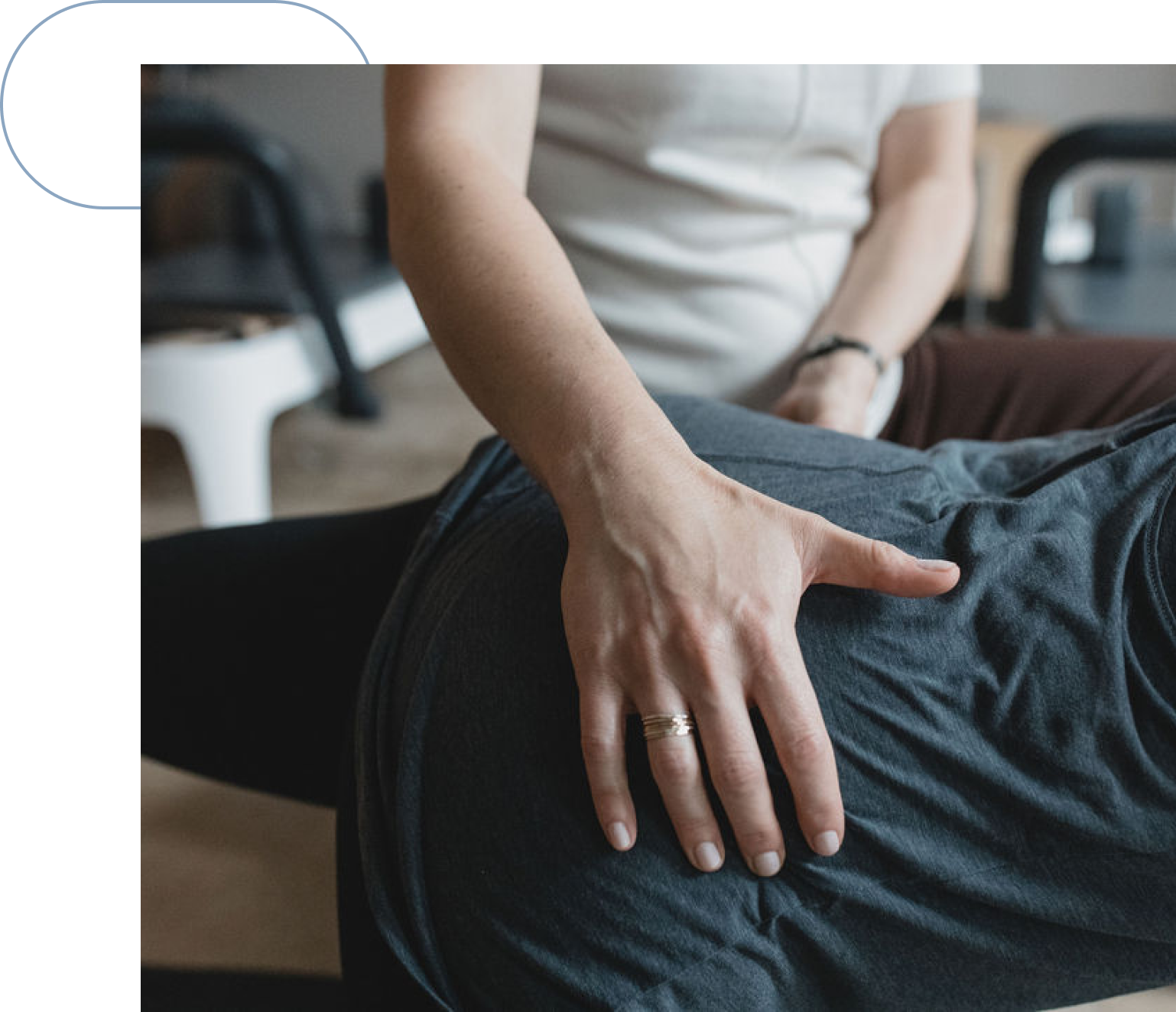OUR SERVICES

Pelvic Floor Physical Therapy Services
The pelvic floor muscles hang like a hammock from the end of the tailbone to the pubic bone. This muscle group serves many roles in the body, from supporting the function of organs such as the bowels, bladder, and uterus to supporting sexual function. All genders have a pelvic floor and just like any other muscle group in the body, these muscles are subject to tension, strain, disuse, and injury, which can lead to symptoms like pain, discomfort, and dysfunction. Symptoms of pelvic floor dysfunction can range from incontinence to constipation to pain with orgasm and everything in between.
There is no one-size-fits-all program for pelvic floor issues. Sometimes muscles need to be strengthened, sometimes they need to learn how to relax. And many times they need both! Through discussions with our patients and an extensive musculoskeletal evaluation, the physical therapists at Foundations Physical Therapy develop a treatment plan. That may include a combination of targeted exercises, manual therapy/myofascial release techniques, joint mobilization, biofeedback, or another of our techniques to support pelvic recovery.
- Education on your condition, the biomechanics of your body, and lifestyle factors that may impact your pelvic health
- Posture and biomechanical assessment and correction
- Pelvic floor physical therapy specific exercises
- Internal and external manual therapy techniques including myofascial release, trigger point manual therapy, joint mobilization and massage
- Neuromuscular facilitation for recruitment and training of pelvic floor and core muscles for strengthening, coordination and relaxation
- Biofeedback for both up-training (activating) and down-training (relaxing) of pelvic floor muscles
- Bladder and bowel retraining to reduce urgency and frequency and to improve efficiency of voiding
- Rectal balloon training to improve bowel emptying, reduce urgency, and improve coordination of pelvic floor muscles
- Self management techniques for symptom relief between sessions and beyond


Insurance Information & Rates
To provide the quality of care that is necessary for the health and rehabilitation of our patients, Foundations Physical Therapy does not accept any health insurance other than Medicare. We spend a full hour with each of our patients at every session and provide a level of care that we would not be able to do if we were in-network with insurances. (For information on why we don’t accept insurance, read our blog post about it.)
We are considered an out-of-network provider across all insurance carriers and submit claims on your behalf. If you are interested in using your out-of-network insurance and would like us to submit to it on your behalf, please submit your insurance information on your intake form on the patient portal. We will be able to verify your out-of-network coverage for physical therapy.
If you have out-of-network coverage or Medicare, you will be responsible for the copay/co-insurance at the time of your appointment. If you do not have out-of-network benefits, full payment is expected at the time of your appointment.


